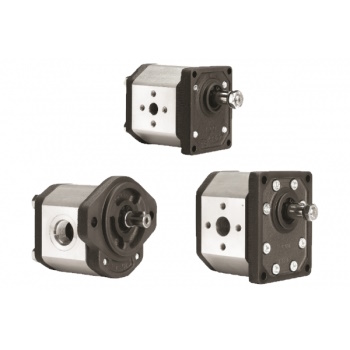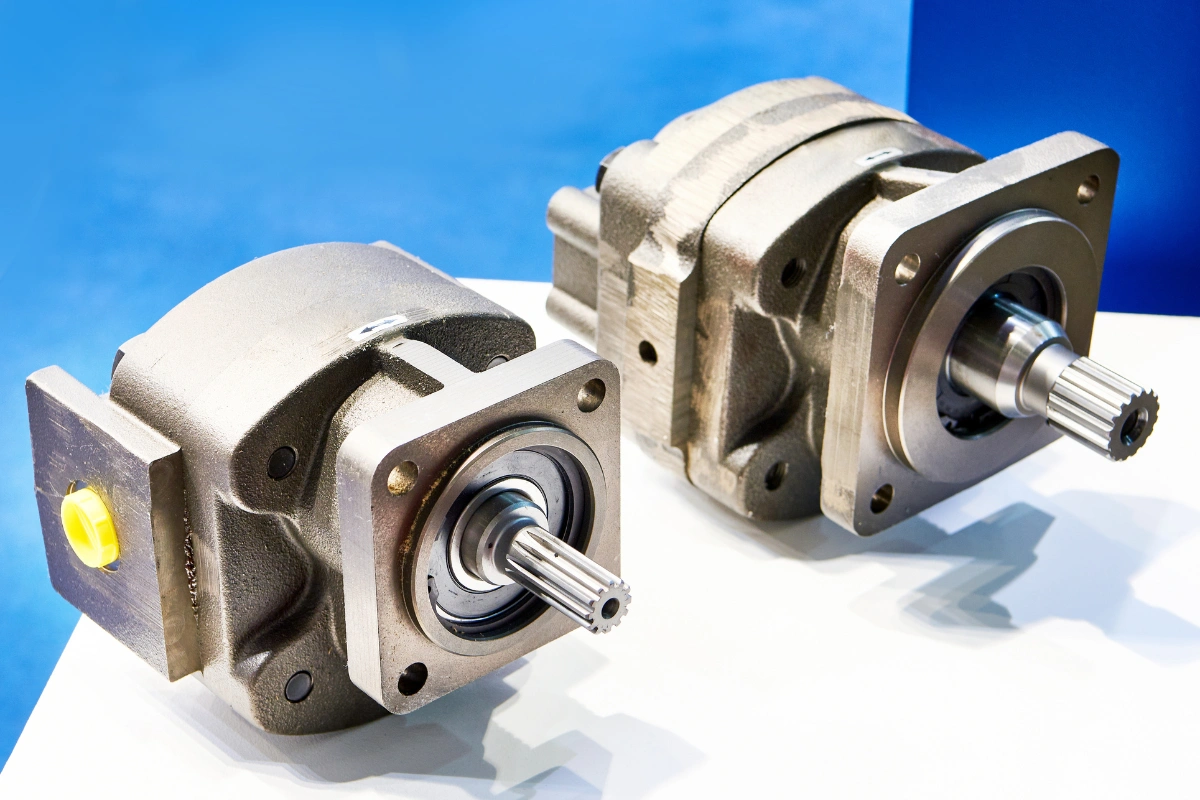Hydraulic pumps are fundamental devices in hydraulic systems, used to convert mechanical energy into hydraulic energy, allowing fluid movement within a circuit. Their operation is crucial to ensure the efficiency and reliability of hydraulic systems in a wide range of applications, from heavy industry to agricultural machinery. Let’s discover how hydraulic pumps work.
Types of Hydraulic Pumps and Their Operation
Piston Pumps
Piston pumps are among the most common and versatile, used in many industrial applications. They operate by moving pistons within cylinders, creating a cycle of suction and compression that pushes the fluid through the system.
How Do They Work?
- Suction: During the suction phase, the piston retracts inside the cylinder, creating a vacuum that allows fluid to enter the piston chamber.
- Compression: In the compression phase, the piston moves forward, compressing the fluid and forcing it out of the chamber through an outlet valve.
This continuous cycle of suction and compression enables the pump to maintain a constant flow of fluid, ideal for high-pressure applications. Piston pumps can be fixed or variable displacement, offering flexibility based on operational needs.
For more details on various types of hydraulic pumps, visit our product page.
Gear Pumps

Gear pumps are among the simplest and most reliable hydraulic pumps, often used in applications requiring continuous and steady flow. There are two main types of gear pumps: external and internal.
How Do They Work?
- Gear Rotation: Two gears, mounted in a chamber, rotate in opposite directions. As the gears separate, they create a low-pressure area that draws fluid into the pump.
- Fluid Transport: The fluid is carried in the cavities between the gear teeth and the chamber wall.
- Discharge: When the gear teeth re-engage, the fluid is expelled from the pump through the outlet valve.
Gear pumps are known for their simple construction and durability, making them suitable for a wide range of industrial and mobile applications.
Vane Pumps
Vane pumps are used in applications requiring quiet operation and the ability to handle low-viscosity fluids.
How Do They Work?
These pumps operate by means of an eccentric rotor with sliding vanes that create variable-volume chambers. Specifically:
- Rotor Movement: The eccentric rotor spins within a chamber, and the sliding vanes extend and retract to maintain contact with the chamber walls.
- Suction: During rotation, the increasing volume of the chambers creates a low-pressure area that draws fluid into the pump.
- Compression: The decreasing volume of the chambers during rotation compresses the fluid, which is then expelled through the outlet valve.
Vane pumps are ideal for applications where a constant and smooth flow is needed, such as in air conditioning systems and lubrication circuits.
To explore a range of high-quality hydraulic pumps and receive technical support, visit our product page.

